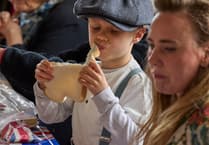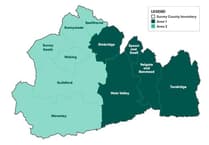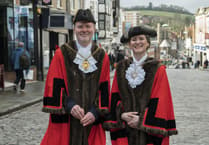THE Conchological Society of Great Britain and Ireland held a regional meeting at Haslemere Educational Museum chaired by Sebastian Payne, vice-president of the Conchological Society.
Members came from as far as Shropshire, Exeter, West Sussex, Eton, and Winchester including some from local natural history societies and for many, this was a first visit to the museum.
The morning began with a talk by June Chatfield, a vice-president of the society and conchologist at Haslemere Museum called ‘W Swanton: conchologist and curator.’
June Chatfield said it was appropriate the society should meet at the museum as they share a common heritage.
Swanton joined the society in 1895, became the first curator in 1897, was president for 1921-22 and retired from the museum in 1948 after serving for half a century and retained his membership until his death.
As well as Swanton’s own shell collection, much of it made during his holidays in the West Country, he also incorporated the shell collections of the botanist R F Townsend and the Hampshire clergyman W R W Eyre.
In the early 20th century the collection of named varieties of species, like the common garden snail, was a popular activity.
This provided a link with the present day: a pale yellow common garden snail shell found by the speaker during a session at society member Caroline Levitt’s Diggers children’s nursery in South Harting, West Sussex, matched with a named variety in the Haslemere collection.
The archives at Haslemere includes correspondence between Swanton and prominent members of the Conchological Society.
While Swanton is well-known locally as a naturalist, museum curator and author of books on fungi and plant galls, his conchology work is less well known.
The second talk by museum curator Julia Tanner, – ‘Shells in the ethnological collections’ – gave some historical background to shells in symbolism and shell-craft before showing illustrations of examples from the Haslemere collections, some of which are on display in the shell arch of the natural history gallery.
Unlike Swanton’s shells from England, the ethnological collections came from far-away places in the Pacific region.
The final talk given by Bas Payne ‘Is the black-footed limpet invading Sussex?’ outlined the differences between the various species of British limpets.
There are now indications the smaller low-shore black-footed limpet’s range, long restricted to the South West, Wales and Channel Islands, is spreading along the south coast.
Members were encouraged to look out for live specimens on the Sussex shores, checking the dark foot sole and white tentacles around the margin of the shell.
After lunch there was an opportunity to go behind-the-scenes to see the shell collection followed by a guided tour on the theme of molluscs in the natural history and geology galleries.
The talks will be written up for the society’s magazine Mollusc World.
For further details, including the full programme of events for both the museum and the Conchological Society, visit www.conchsoc. org.uk and www.haslemeremuseum.co.uk





Comments
This article has no comments yet. Be the first to leave a comment.